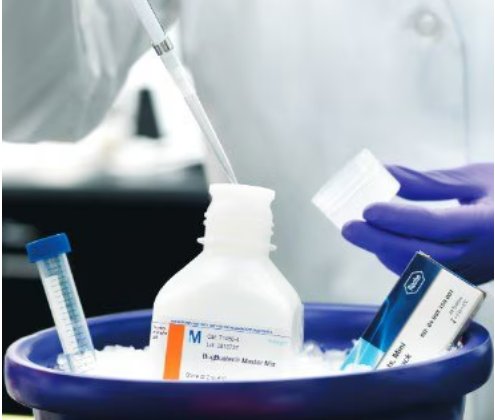 首页>
生物试剂
首页>
生物试剂
商家描述
售后服务
商家资质信息
产品评价(0)
DNA-directed RNA polymerase II subunit RPB1 (UniProt: P24928; also known as EC: 2.7.7.6, RNA polymerase II subunit B1, DNA-directed RNA polymerase II subunit A, DNA-directed RNA polymerase III largest subunit, RNA-directed RNA polymerase II subunit RPB1, POLR2A) is encoded by the POLR2A (also known as POLR2) gene (Gene ID: 5430) in human. It is the largest and catalytic component of RNA polymerase II that catalyzes the transcription of DNA into RNA using the four ribonucleoside triphosphates as substrates. It has multiple Zinc and magnesium ion binding sites. The binding of ribonucleoside triphosphate to the RNA polymerase II transcribing complex involves a two-step mechanism. The initial binding seems to occur at the entry (E) site and involves a magnesium ion temporarily coordinated by three conserved aspartate residues of the two largest RNA Pol II subunits. The ribonucleoside triphosphate is transferred by a rotation to the nucleotide addition (A) site for pairing with the template DNA. The catalytic A site involves three conserved aspartate residues of the RNA Pol II largest subunit which permanently coordinate a second magnesium ion. POLR2A is localized to cytoplasm in its hypo-phosphorylated form and the active hyper-phosphorylated form is located mainly in the nucleus. The tandem heptapeptide repeats (Tyr1-Ser2-Pro3-Thr4-Ser5-Pro6-Ser7) in its C-terminal domain (CTD) can be highly phosphorylated and regulates transcription coupled processes. Phosphorylation is shown to occur mainly at serine 2 and serine 5 residues of the heptapeptide repeat and is mediated by CDK7 and CDK9. Phosphorylation can also take place at serine 7 of the heptapeptide repeat, which is required for efficient transcription of snRNA genes and processing of the transcripts. Its C-terminal domain (aa 1593-1960) serves as a platform for assembly of factors that regulate transcription initiation, elongation, termination and mRNA processing. The K7-residues in non-consensus repeats of human RNAPII are modified by acetylation, or mono-, di-, and trimethylation. Acetylation of K7, and di- and tri-methylation of K7 are found exclusively associated with phosphorylated CTD peptides. Monomethylated K7 is found in non-phosphorylated CTD. The monoclonal antibody (clone 1F5) is shown to recognize K7me1/2 residues in CTD. (Ref.: Voss, K., et al. (2015). Transcription 6(5); 91-101).,官网链接:https://www.sigmaaldrich.cn/product/mm/mabe1793
默克
科研、开发、生产。
作为生命科学行业的全球领先供应商,我们致力于为科研、生物技术开发和生产,以及制药药物疗法开发和生产提供各类解决方案和服务。
 会员登录
会员登录.getTime()%>)
 购物车()
购物车()

 成功收藏产品
成功收藏产品
